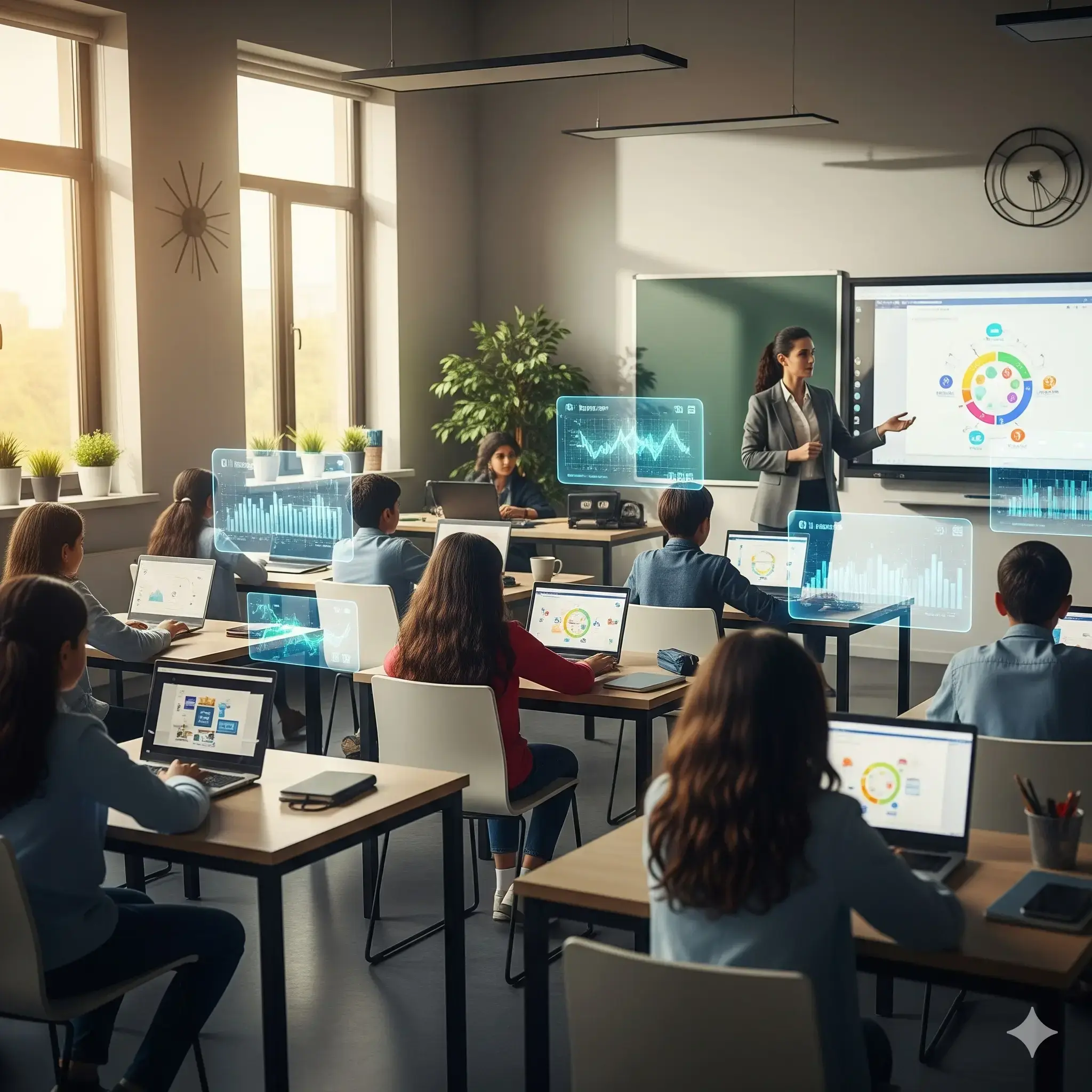Admission Enquiry


We already have AI in the form of voice assistants such as Alexa or Siri, question-answering chatbots, or video and song-recommending apps. AI is now also coming into our classrooms. From lesson-adapting apps that tailor content for each student's pace to grading and lesson-planning aids, schools are looking into ways that AI can simplify and enhance learning.
But as every coin has two sides, so AI in education also has two sides. Let's see both sides, so that students and teachers can understand how to utilise AI correctly.
Every student learns differently. Some understand quickly, while others need more time or different explanations. In a classroom of 30–40 students, it's difficult for teachers to give equal attention to everyone.
AI tools can help by monitoring each student's progress and suggesting lessons, quizzes, or practice activities at the right level. This way, no one feels left behind.
Teachers do much more than teach. They grade homework, prepare lesson plans, and manage attendance. This workload can reduce the time they spend interacting directly with students.
AI can take care of many routine tasks, such as:
In India, apps like TeacherKit and Knewton are already helping teachers with planning and grading. This allows teachers to focus more on guiding, mentoring, and supporting their students.
Not all students learn in the same way. Some may have learning disabilities, while others may not be fluent in the classroom language. AI can make education more inclusive by offering tools such as:
Students sometimes lose interest when lessons feel boring or too difficult. AI can make learning more interactive through exercises, quizzes, and even games.
Imagine learning science through an AI-powered simulation where you can perform virtual experiments safely. That's not just effective—it's fun too!
While AI has many advantages, it also comes with challenges that schools must handle carefully.
A big concern is that students may rely too much on AI. Instead of learning, some may use AI tools to complete homework or write essays for them.
This over-reliance can harm real learning and make exams harder for those who don't practice properly.
AI systems need a lot of data to work well—such as student grades, learning habits, and sometimes even personal details. If this data isn't protected, it could be hacked or misused.
That's why schools must ensure any AI tools they use follow strong data protection rules.
AI depends on large sets of data, but if the data is biased, the results may not be fair. For example, AI might grade writing differently for students with unusual writing styles.
AI is smart, but it cannot replace the human touch. Students need encouragement, care, and emotional support—things that only teachers can provide.
For AI to be effective, teachers must know how to use it. Schools also need proper infrastructure, such as good internet, devices, and electricity.
This shows that AI is not a magic solution. It only works when schools are ready.
The best way forward is not to replace teachers with AI, but to let them work together.
AI in education is no longer just an idea for the future—it's happening now. The advantages are clear: personalised learning, saving teacher time, making classrooms inclusive, and keeping students engaged. But the drawbacks are also important: over-reliance, privacy issues, unequal access, and the loss of human connection.